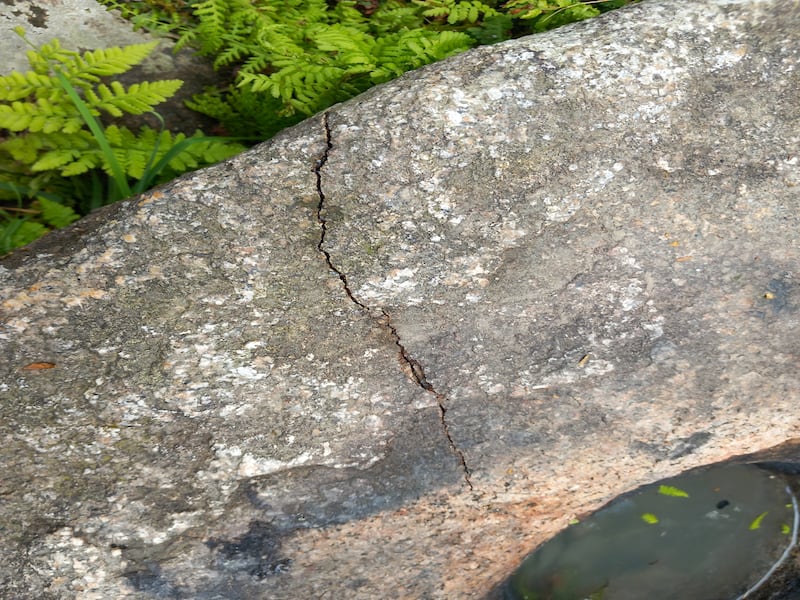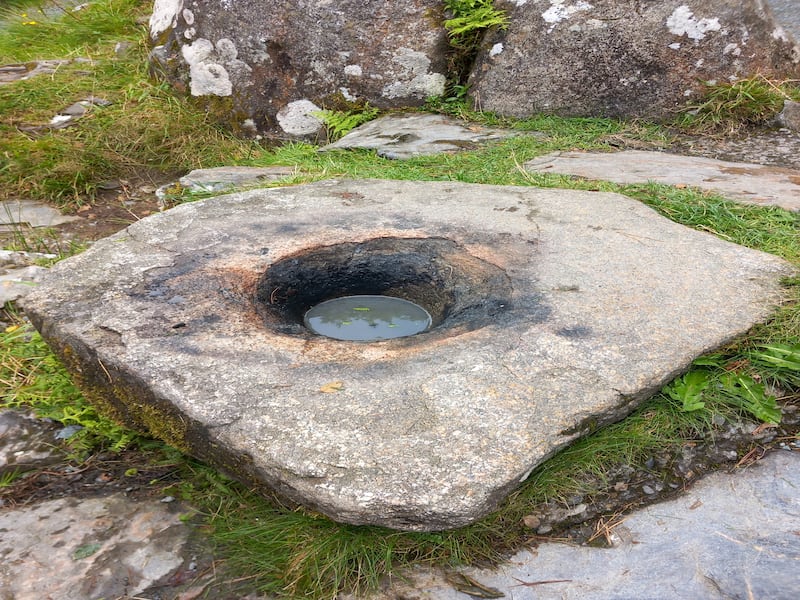A more than 1,000-year-old bullaun stone, associated with St Kevin of Glendalough and known as the Deerstone, has been vandalised in the former monastic city in Co Wicklow.
The damage, which comes just days before National Heritage Week, follows vandalism of the Neolithic cairns at Loughcrew, Co Meath, and to the ancient Lia Fáil standing stone on the Hill of Tara, also in Co Meath.
Last Thursday a fire was set in Glendalough’s Deerstone, a bowl-like slab of granite in which a deer was reputed to have daily left milk at the request of St Kevin. The fire caused substantial damage with at least four large cracks in the main boulder, leaving the rim of the bullaun recess badly shattered.
It is feared the cracks travel below and through the granite boulder into which the bullaun was carved. The boulder is now susceptible to freezing and thawing in the months ahead and archaeologists say it will probably cleave apart in a short time if it cannot be repaired.
READ MORE
[ Fifty-one incidents of vandalism and damage at OPW sites last yearOpens in new window ]
[ The Hill of Tara’s Lia Fáil has a fascinating history - but is it the original?Opens in new window ]
Bullaun stones were associated with many early Christian church sites within Ireland. They feature a man-made hollow within a basin in a rock, boulder or a rock outcrop. It is thought they may have been holy water fonts, baptismal fonts or used for crushing grain or herbs for medicinal purposes.
Over the centuries many theories were applied to the rainwater which accumulates within the basins, some suggesting the water would have either curative or cursing properties.
Pat Reid, project manager with the Heritage Council and a member of the Glendalough Heritage Forum said there are an estimated 1,000 bullaun stones across the island with the Deerstone in Glendalough being possibly the most famous.


Mr Reid, a former field archaeologist, said there were many legends associated with bullaun stones and the Deerstone derived its name from a legendary association with St Kevin, who founded the monastery at Glendalough in the 6th century.
The legend says a newly widowed man asked the saint for help to source milk for his twin infants. The saint called down a doe and asked her to leave milk for the infants in the bullaun stone every morning, and that, according to the legend is what happened.
“There may have been a fire on more than one night last week. It might have been done by campers and there is some concern that accelerants like fire lighters could have been used,” said Mr Reid. “The damage may now get worse when rain gets into the cracks and freezes. We are concerned the parts may cleave apart.
“It is a shame because it is thought to be at least 1,000 years old and may even be older.”
The Deerstone is the only bullaun on the southside of the river although there are as many as 30 others scattered throughout former monastic city. It is surrounded by boulders and passed by tens of thousands of visitors every year.
The damage follows graffiti carved into stones at the Loughcrew cairns in Co Meath, which are estimated to date from 3,300 BC, making them marginally older than the better-known Newgrange prehistoric monument, also in Co Meath. The damage at Glendalough also follows the vandalism of the 5,000-year-old Lia Fáil standing stone, located on the Hill of Tara.
The Department of Heritage said an inspection on Monday showed severe scorching from fire and cracking on the bullaun stone. It said “further specialist analysis will be required to inform any possible repair”. The National Monument Service is in the process of reporting the matter to An Garda Síochána, it added.












